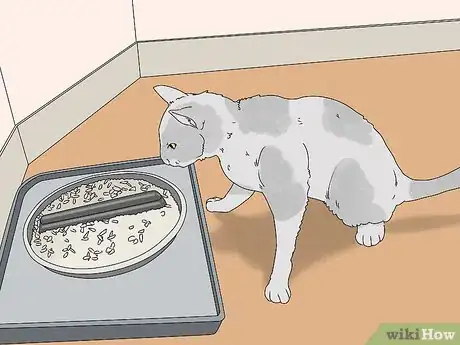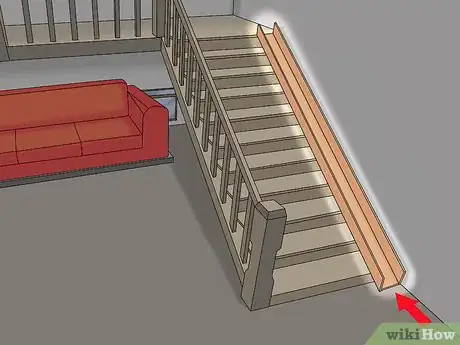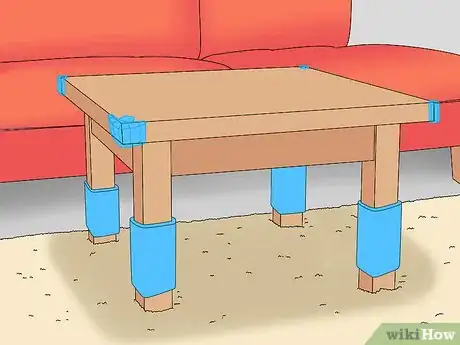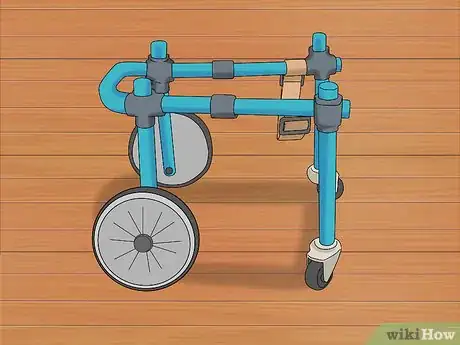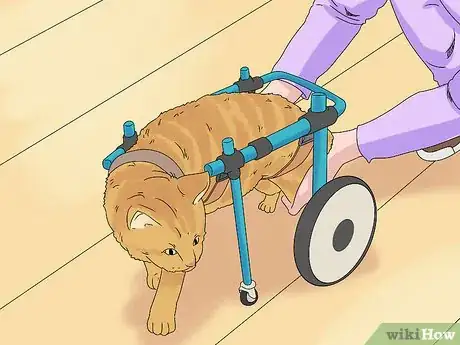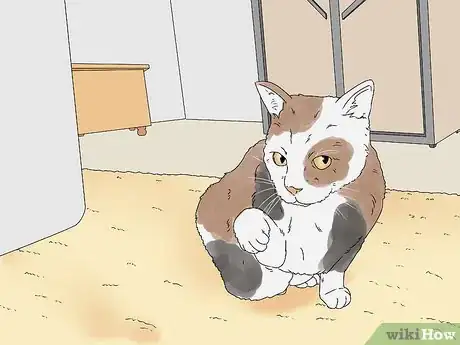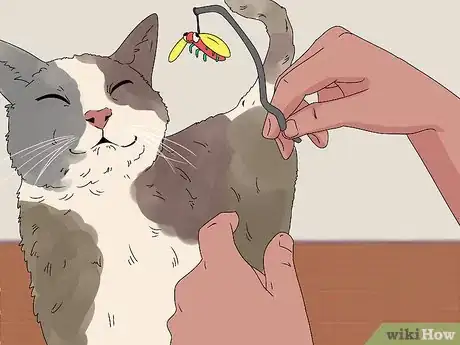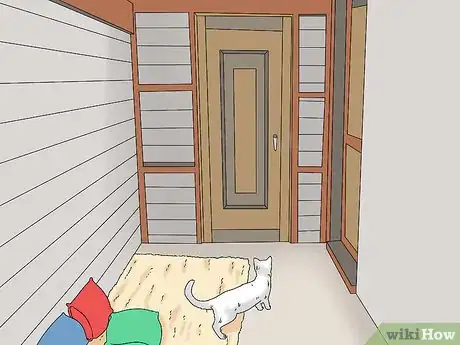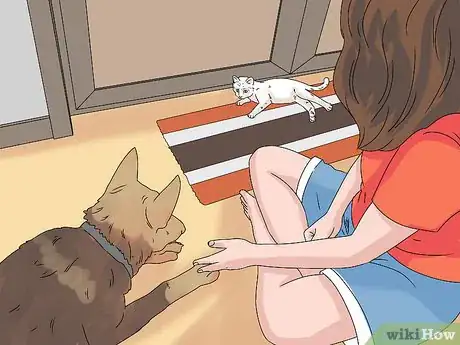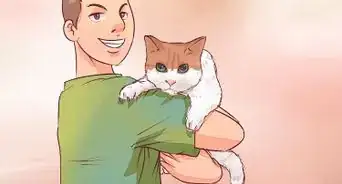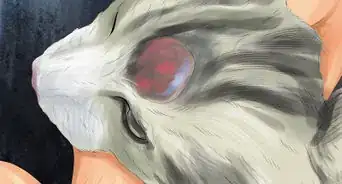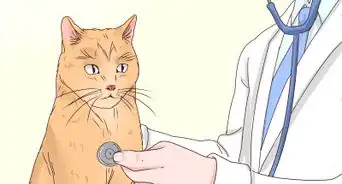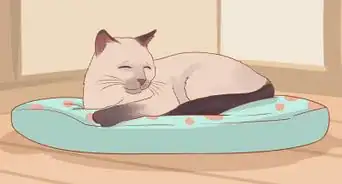This article was co-authored by Deanne Pawlisch, CVT, MA. Deanne Pawlisch is a Certified Veterinary Technician, who does corporate training for veterinary practices and has taught at the NAVTA-approved Veterinary Assistant Program at the Harper College in Illinois and in 2011 was elected to the board of the Veterinary Emergency and Critical Care Foundation. Deanne has been a Board Member of the Veterinary Emergency and Critical Care Foundation in San Antonio, Texas since 2011. She holds a BS in Anthropology from Loyola University and an MA in Anthropology from Northern Illinois University.
There are 11 references cited in this article, which can be found at the bottom of the page.
wikiHow marks an article as reader-approved once it receives enough positive feedback. In this case, 93% of readers who voted found the article helpful, earning it our reader-approved status.
This article has been viewed 16,232 times.
Cerebellar Hypoplasia (CH) is a condition in cats that causes uncoordinated, jerky movements. It involves a lack of development of the cerebellum in the cat’s brain, which is responsible for motor skills. CH is a non-progressive illness. It can be mild, moderate or severe. Cats with CH have a normal life expectancy and are not in pain due to the condition. They can live normal lives but require some extra care to make sure their living environment is accessible.
Steps
Modifying Your Home
-
1Add carpeting and cushions to your home. Cats with CH are prone to falling because of their disability, so it is best to have carpeted surfaces in your home.[1] It is also wise to install carpeting and cushions under elevated spots, so that your cat has a soft landing area.[2]
- If you currently have slippery hardwood or other flooring, consider getting some carpets to make life easier for your cat.
- Carpets are especially important for cats with moderate or severe CH.
- If your cat has only mild CH, carpeting is preferred but not absolutely necessary.
-
2Purchase a litter box with an easy entrance and high sides. A litter box with high sides will offer your cat greater support. The entrance should be low and free of obstructions.[3]
- If your cat has mild CH, you may be able to use a normal kitty litter box.[4]
- If your cat has moderate CH, you should use a low entry litter box.
- If your cat has severe CH, you may need to stabilize them while they use the litter box. If you don’t have time to hold them in the litter box, you may want to use puppy training pads.
Advertisement -
3Make an accessible eating area. You want to use raised food and water dishes, so that your cat can eat without too much trouble.[5] In addition, it is best to locate their eating area in an area of the house that can be easily cleaned since there will be frequent messes to clean up.[6]
- Use soft dishes so that your cat is less likely to chip its teeth.
- Elevated dishes will allow your cat to eat in a more relaxed manner and reduce stress on the spine and the digestive system.[7]
- The dishes should be raised between 4 to 6 inches (10 to 15 cm), depending on the height of your cat. The top of the dishes should align with your cat’s lower chest.
- Look for elevated dishes that are not easily tipped over.
-
4Use ramps and stairs to make elevated spots more accessible. Since cats with CH cannot typically jump, you could use ramps to make their elevated hiding spots more accessible. Make sure the ramps or stairs are covered in carpet so that your cat is less likely to slip.[8]
- You might consider installing a ramp to your sofa.
- If they like the view from a window, you might consider adding a ramp that allows them to access a windowsill.
- You can find folding ramps at pet stores and online that can be moved from one location to another.[9]
- You can get ramps with scratching posts in pet stores and online as well.
- Cat ramps and stairs cost anywhere from $20 to $120.
-
5Add bumpers to sharp furniture and corners. Since cats with CH often have a hard time navigating turns, you may want to add bumpers to soften the blow if they run into a piece of furniture. You can get foam bumpers from home hardware and furniture stores.[10]
- If you have a low coffee table with sharp edges, you could put bumpers on the corners.
- Bumpers are especially important for cats with moderate or severe CH.
- Depending on the severity of the CH, you may want to install baby gates. For instance, you could place baby gates in front of stairways and garage doors.
Using a Cat Wheelchair or Cart
-
1Purchase a cat wheelchair or cart. If your cat’s CH is severe, a cat cart or wheelchair can help improve their quality of life, as well as improve muscle development and mobility.[11] You can purchase adjustable pet wheelchairs or carts for your cat with CH.
- Consult with your veterinarian about the purchase of a cat wheelchair.[12]
- Cat wheelchairs can be found at some pet stores, as well as online specialty retailers with a focus on pets with mobility challenges.[13]
- You can also make their own cat wheelchair with PVC piping, fabric and cart wheels.[14]
-
2Introduce your cat to the wheelchair. Prior to putting your cat in the wheelchair or cart, you want to inspire curiosity and create a feeling of comfort around it. You want to create a positive association with the wheelchair. Try keeping it around when you have playtime with your cat, so that it has positive associations.[15]
-
3Put your cat in the wheelchair for progressively longer periods. Put your cat in the wheelchair for a few minutes. Let your cat explore with the new device. Then, slowly build up the amount of time that your cat spends in the wheelchair.[16]
- You can use toys to encourage your cat to move around in the wheelchair.
- You should block stairways so that your cat doesn’t fall down the stairs in the wheelchair.[17]
- Remove obstacles in your house so that your cat doesn’t get stuck in the wheelchair.
Keeping Your Cat Healthy
-
1Keep your cat inside. Since cats with CH have a hard time getting around and could easily fall or get stuck, you should avoid letting them outside. In comparison to cats without a mobility impairment, they are also more vulnerable to predators.[18]
-
2Play with your cat. Cats are hunters and need to express their natural instincts. They also need regular exercise in order to stay healthy and reduce the risk of illness.[19] Cats with CH also require regular exercise and play, so you should make time to play with them every day.[20]
- For cats with CH, play can help increase their confidence.
-
3Confine the cat to a small area when you’re not home. Because cats with CH have so many mobility issues, you may want to keep the cat confined to a small area to keep them safe while you’re gone. A small room or playpen would work well, just be sure they have access to food, water, and a litter box.
-
4Supervise your cat, especially around other animals. Cats with CH need more supervision and care than other cats to make sure they stay safe and healthy. Keep the cat away from other animals that may play too roughly or try to harm them. You can use baby gates to separate the pets in your home so each has its own area, if necessary.
-
5Take care of your cat’s claws. Your CH cat’s claws are vital to their mobility. Without their claws, they will have a much harder time getting around. Leave their claws a little bit longer than normal.[21]
References
- ↑ http://www.tenthlifecats.org/all-about-cats/health-and-care/ch
- ↑ https://www.catchat.org/index.php/disabled-cat-adopt-care
- ↑ http://www.tenthlifecats.org/all-about-cats/health-and-care/ch
- ↑ https://lifewithchcats.com/ch-topics-tips/litter-box/
- ↑ http://www.tenthlifecats.org/all-about-cats/health-and-care/ch
- ↑ https://www.catchat.org/index.php/disabled-cat-adopt-care
- ↑ https://www.catfooddispensersreviews.com/elevated-cat-feeder-reviews/
- ↑ https://www.catchat.org/index.php/disabled-cat-adopt-care
- ↑ http://www.our-happy-cat.com/pet-ramps.html
- ↑ http://www.tenthlifecats.org/all-about-cats/health-and-care/ch
- ↑ https://lifewithchcats.com/2012/02/04/what-you-need-to-know-about-walkers-for-ch-cats/
- ↑ http://bestfriends.org/resources/faqs-about-cats-and-dogs-wheelchairs-and-carts
- ↑ http://www.mnn.com/family/pets/stories/owners-offer-tips-on-caring-for-pets-with-special-needs
- ↑ https://lifewithchcats.com/2012/02/04/what-you-need-to-know-about-walkers-for-ch-cats/
- ↑ https://lifewithchcats.com/2012/02/04/what-you-need-to-know-about-walkers-for-ch-cats/
- ↑ https://lifewithchcats.com/2012/02/04/what-you-need-to-know-about-walkers-for-ch-cats/
- ↑ http://bestfriends.org/resources/faqs-about-cats-and-dogs-wheelchairs-and-carts
- ↑ https://vcahospitals.com/know-your-pet/cerebellar-hypoplasia-in-cats
- ↑ https://lifewithchcats.com/2013/05/12/why-its-important-to-play-with-your-cat-every-day/
- ↑ https://lifewithchcats.com/2013/05/12/why-its-important-to-play-with-your-cat-every-day/
- ↑ https://lifewithchcats.com/ch-topics-tips/
About This Article
You can care for your cat with cerebellar hypoplasia by keeping it indoors, which will keep it safe and prevent it from hurting itself or getting stuck. At home, you should make some modifications to help your cat get around more easily. Try adding carpets, rugs and cushions to hardwood floor, so your cat has a soft landing if it falls. Additionally, you should add bumpers to sharp corners of furniture, like coffee tables, so your cat doesn’t hurt itself on them. Besides these changes, you can use raised food and water dishes to make it easier for your cat to eat and drink. To learn how to separate your cat from other pets to keep it safe, read more from our Veterinary co-author.


